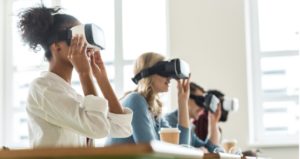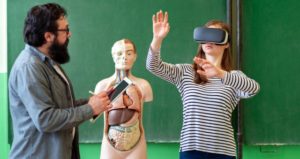
Technologies for Serving Different Learning Needs
This article first appeared in the Teaching Professor on August 7, 2018. © Magna Publications. All rights reserved. Just as all students are different, so are all

This article first appeared in the Teaching Professor on August 7, 2018. © Magna Publications. All rights reserved. Just as all students are different, so are all

As teachers embrace digital tools for online learning, many online tools can enhance and facilitate the organization and delivery of courses. Google Docs, Google Sites,

The thought of teaching technology at a distance can be intimidating and downright scary. How can professors teach hands-on technology skills to students from afar?

No matter your specific discipline, teaching in the 21st century can often feel like you need an advanced degree in IT if you want to

We live in a time of never-before held access to information, which means educators must compete with a wide-ranging array of media for the finite

On August 6, 1991, the World Wide Web became public to the world and forever changed the way that ideas move. Although in-person dialogues and interactions

A wise and dear colleague of mine, now retired, once said to me as we walked to class, “I teach for free; they pay me

It is imperative that educators find new ways to incorporate technology to stay current. This can be done by considering tools and applications that will not only enhance a students’ educational experience but also support teaching and learning. We offer three tools/applications that supports this notion here:

The proliferation of low-cost, easy-to-use technology has opened the door for students to discover new ways of acquiring and constructing knowledge and representing their thinking (Bene 2015, iv). After attending an educational technology conference last year, I opted to extend my classroom pedagogy to better incorporate technology and promote active learning.

It comes as no surprise that the way we consume information is changing. Increasingly, we are moving from text-based forms of information to visual ones,
Get exclusive access to programs, reports, podcast episodes, articles, and more!